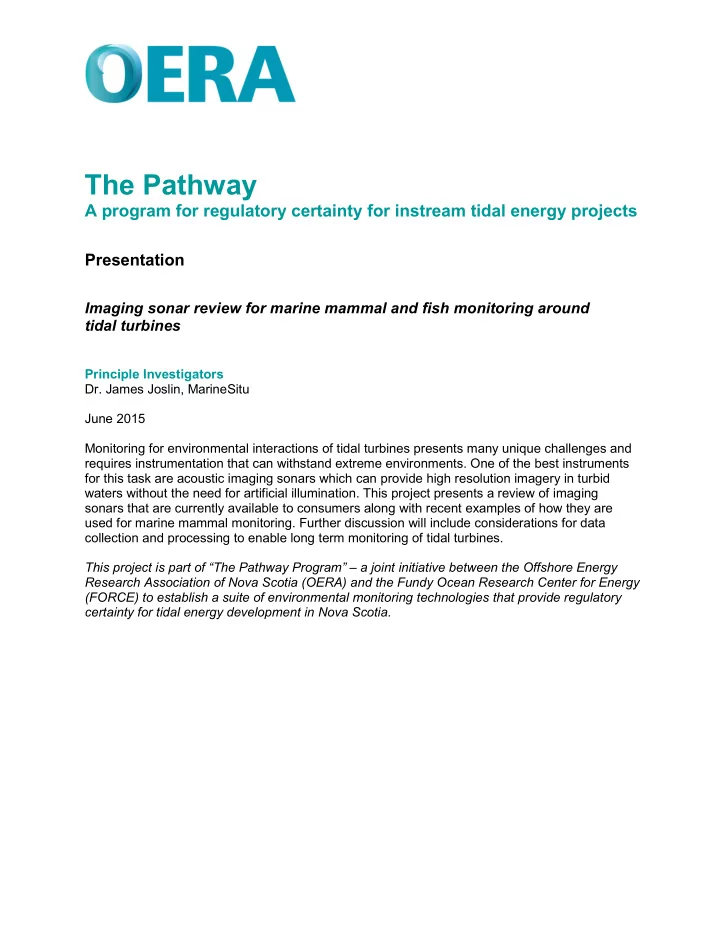

The Pathway A program for regulatory certainty for instream tidal energy projects Presentation Imaging sonar review for marine mammal and fish monitoring around tidal turbines Principle Investigators Dr. James Joslin, MarineSitu June 2015 Monitoring for environmental interactions of tidal turbines presents many unique challenges and requires instrumentation that can withstand extreme environments. One of the best instruments for this task are acoustic imaging sonars which can provide high resolution imagery in turbid waters without the need for artificial illumination. This project presents a review of imaging sonars that are currently available to consumers along with recent examples of how they are used for marine mammal monitoring. Further discussion will include considerations for data collection and processing to enable long term monitoring of tidal turbines. This project is part of “The Pathway Program” – a joint initiative between the Offshore Energy Research Association of Nova Scotia (OERA) and the Fundy Ocean Research Center for Energy (FORCE) to establish a suite of environmental monitoring technologies that provide regulatory certainty for tidal energy development in Nova Scotia.
Imaging sonar review for marine environmental monitoring around tidal turbines for Pathway 2020 James Joslin Applied Physics Lab, University of Washington June 12 th , 2019
Overview • Motivation • Literature Review Summary • Imaging Sonars • Applications • Key Considerations • Common Issues • Summary and Recommendations • Acknowledgements
Motivation – Pathway 2020 • To develop an integrated, robust and cabled multi-instrument subsea platform to monitor interactions between tidal turbines and marine life in Minas Passage by December 2020. • Phase 1 – Comprehensive literature review and current status survey of imaging sonars. • Imaging sonars can provide high resolution imagery in turbid waters with ranges >100 m without artificial illumination.
Literature Review Summary • 20+ papers and reports on relevant uses of imaging sonars for marine life monitoring in high float environments. • Deployment methods: • Vessel based surveys or short term testing monitoring • Bottom lander in close proximity to tidal turbines • Integrated with turbine platform • Applications: 6 specific application presented here in more detail • Marine mammal monitoring: harbor seals, grey seals, porpoises • Fish monitoring • Challenges: • Data management and processing delays • Biologic vs. non-biologic target detection and tracking • Instrument durability for long term deployments
Imaging Sonars - General Specifications Operating manuals for each sonar contain the following specifications: • Operating Frequency: >260 kHz to 3 MHz • Swath/Field of view angles • Range: 5 to 200 m • Resolution • I/O trigger option • Connector type • Power requirements • Housing material • Software and SDK • Typical applications Example Spec Sheet for Tritech Gemini
Recommend
More recommend